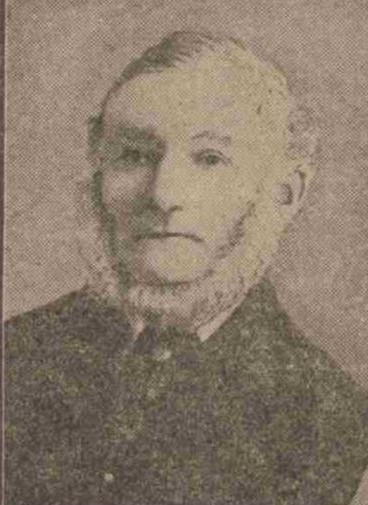
I am now starting on a short history of my early life of what I remember about the District of Keynsham where I worked and what I did, also some of the chief events that took place at which I was present. Born in the year 1833, I started to work at the Harford & Bristol Brass Co at the age of 9 years working for the said firm 66 years. I might say that before starting in life at the Brass Mills I well remember the making of the Great Western Railway through Keynsham and how the inhabitants did watch & wonder, what kind of thing it was going to be; the pile driving for the Bridge over the River Chew was very interesting and how the Foreman did say “Give it another tap!” trying the joints with the blade of his knife when fixing the large stones in place. Anyone that will trouble to take notice of the Bridges will see the good work of their construction when getting out at the track where the station stands. Human skelitons (sic) were brought to light and my grandfather kept one of the sculls (sic) for several years; eventually the local Doctor took it away with him as a souvenir.
The Town at this period about the year 1840. My first experience of factory life was at the tube section. The Manager at that time Mr Mortimer, enquiring of me if I could try sir. About thirty men were employed in the Brass & Copper tube making and one a Birmingham man James Gossage by name. With this man I started in the tube brazing. The Harford Co. supplied customers in various towns, among them the Avon Side Engineers works, Hill’s shipbuilders at Hotwells, Messrs Adlam & Llewellyn. Then from tube making to the brass and copper wire making; at this period coakes were not obtainable so the furnaces were heated by a kind of bracken supplied by the surrounding farmers, damped down with small coal [which] when burnt through created the heat to melt the different metals of which brass is made: copper spelter and tin. Different mixtures and grades were made, Red-Wire, Pale-Wire and Common Yellow-Wire. The Red and Pale being used for weaving purposes, was sent away “soft” to Christys & McFarlanes at Glasgow to be drawn smaller. At this time the moulds were two large stones plastered arround the sides to keep the moulten metal when cold into a long solid slab, then it was rolled down between the rolls, cold between each process of the rolling. It was anhealed [annealed] to make it soft so that the metal would sink after being rolled to the desired size, about 12 or 14 wire gauge, about 3 inches wide. It was cut by steel blades into 18 strings [and] from now on it is wire. After being rolled between a small pair of rolls with a small half round groove which made all the strings practically round [it was] then anhealed and pickled with a mixture of vitriol and water. [Then] it was ready for the wire-drawer which set the steel plates to the gradual smaller size which was required to show how valuable the pins were which at this time were made. Well to do people used to give their wives money once a year to buy pins hence the word “pin-money”. The Harford Co. undertook to supply a London firm with a quantity of pin wire to start making rolled head pins and [the] Firm in question failed, the Harford Co losing about £1,000 pounds, a lot of money in those days. From the ore to the finished article it took about 50 or 60 process[es] and female labour was used at several of them. Right and left handed Blocks of very ingenious makes 10 inches and 6 inches and one man used to look after 3 or 4 at a time drawing his pin wire; also copper wire for piano work and all sorts of different sizes, square, flat, half round. Hannam [Hanham] & Stroud at this time were pin making places, Birmingham amongst other towns being supplied with the wire. The Harford Co. is a very old firm established about the year 1703 when Birmingham was green fields, the number of employees being about 250. Quite a lot of the wire was used for brushmaking and tying down the wine. [? See Portugal later on]. William Veal being one of the wire-drawers. It required a great amount of skill and patience to get the wire [to the] exact sizes required. Another line was African rods made of brass & about ¼ of an inch thick packed in boxes about 50 lb in a box and sent away “soft”, thousands of tons of this particular line being bartered by merchants in Africa for Ivory, Palm Oil and other costly articles which the great continent of Africa contained. Boats would come and take 50-60 tons at a time to be shipped from Liverpool. Wire was also used to make up the crinoline[s] worn by women. Merchant King of Bristol was a large customer for the African rods, also a shallow pan called “neps”, thousands at a time being ordered, something in shape to our dinner plate, hammered out at the Battery Mill at Saltford then sent over to Keynsham Mill to be turned in the lave which I used to do, some of them 40 inches wide. These neps were used to catch the sea water, then exposing to the sun left the salt behind. Then a large trade was done in Lisbon for the wine trade of Pourtugal. (sic) [LINE lost at bottom of page]
Kettles buckets of brass and boilers, one of which I have now, [which has] been in use over 70 years. Some of the buckets, small size, being sent to Africa and used by the natives to catch the oil from the Palm Trees; Domes for the locomotives. Another line was strip metal used by ship builders to protect the wooden bottoms and sides of the ship. This metal was called Muntz Yellow Metal and I might here mention that the Muntz Firm of Birmingham had took out patent rights to manufacture this particular grade of metal. They found out that the Harford Co. were infringing their patent so took an action in court to recover damages and stop the Harford Co. from producing these sheets. They [Harford’s] took the day as their mode of manufacturing the article was quite different to Muntz’s way: Harford rolling it down cold and Muntz, hot. The Foreman which came to Keynsham with the Manager of Muntz stopping at Keynsham Mills several weeks, including the cast iron moulds which have been in use ever since, he being well paid, about 50£ and wages beside, to get out patterns for the moulds, sometimes as many as 30 casters being working at once, 21 Battery Mills also being in use. The railway now being in working order [missing words] spelter from Swansea was being brought by rail and unloaded by the Bridge at the entrance to the works. All power was supplied by the river Avon too, and 7 or 8 large Water Wheels were used to drive the machinery. Very often high floods would put a stop to the factory douting the ovens and completely covering the machinery. This is a serious time but thoughtlessly enjoyed by the younger people. Machinery have now been erected driven by steam on higher ground but several of the lines of trade have gone and Keynsham Mills are not what they were 70 or 80 years ago. At different times during my life the Old Town of Keynsham have harboured various trades: candle making at the corner of Temple Street and High Street; also three places carrying on tanning down past the Crown public house by the Chew Bridge; malting where the Liberal Club stands and where the ten houses stand in Dragon’s Hill; also Logwood Mills at Chewton, which was burned down and never rebuilt; the same kind of work being carried on by Mr Thomas by Chew Cottages. This place in turn have been a flour mill and cement place but has been burned down which was not in my time, [that] was in the old coaching days and often 20 or 30 coaches would be through in one day The Mail was drawn by four Greys and a Man standing behind sounding a Bugle for the mails to be ready. Horses were sometimes changed at the Lamb & Lark Hotel. Goods were carried by coach drawn by six horses. The Post Office at the time being where the Elmgrove Hotel stands, one delivery a day and kept by one of the Buglers from the Mail Coach. It was carried on by another place in the High Street before being shifted to the present position. Now there is three deliveries a day a day, about 12 servants, beside Telegraph, Money Orders, and quite up to date in Post Office Works. Picture House have been tried but not successful. Electric Light have been adopted in the public streets. Now I must say a few words about our grand old church. Mr Robinson was the Minister and he got together by Public Subscription £2,000 to bring the Grand Old Church into a better state. A new roof was put on, seats were remodled and made to face the east, the lighting arrangements were improved, from candles to gas, the Brass tubing being made at the mill and gave by the Firm. My son, Charles Brookman and myself made them giving our service free and fitted up by Adlams of Bristol. Gas at this time being about used genarly. Electric Light coming later from a Generating Power House erected close to the Church. The Church Tower was struck by lightning about 1604 [and] was rebuilt by public subscription after a proclamation by the king. The original can be seen in the Vestry, A new Chapple was erected at the corner of Dane’s Lane, the old one being used as a Boot Factory [and] now used for the manufacturing of motor springs. I remember the launching of the boat Great Britain built at Bristol and the ceremony being graced by the presence of Prince Albert, a song being written to commemorate the occasion a couple of lines which read
I went to Bristol Prince Albert to see
Likewise Great Britain the Pride of the Sea
Then I remember the Clifton Suspension Bridge being built after, often calling that way to watch the process and the day it was finished I went to it. [It] was a grand sight at night being all lit up with thousands of lime lights.
About the year 1852 [*NB it was 1853-6] the Crimea War took place and it was a very trying time and the weather was severe. Potatoes got frosted very bad and bread was 11 pence per loaf of one lb, meat was 8 pence, butter 14 pence, yet, bacon plenty at 8d per lb.
We had an Order of 13 tons of Copper wire for Russia at the same time and had to work day and night to get them done. They were sent to Hull for shipment. Trade got very bad about this time and the cold was so intence that the Water Wheels got frost Bound and the water frozen over that over a 100 of us could get on the ice at once. One of the Crimea Vetrans lived in my house for twelve years, Mr Adlam, he got shot in the eye. When he died a military funeral was accorded to him: a detachment of Voulonteers with a Band and a dozen of old vetrans followed. I also attended the funeral. Never did I recollect seeing so many people on the Hill before. He was buried at Compton Dando. Quite a jolly old man and a good neighbour.
Now a few words about the great European War which affected every country under the sun. August 4th 1914 will never be forgotten as on that day war was declared on Germany. People said it would be over in six weeks. Well, the six weeks went on into five years before Germany was beat and every family in England, Ireland, Scotland, & Wales knew what it was to lose a near or distant relative, some families losing 4 or 5 sons. My neighbours had each a son Killed and I had a grandson, William Goodhind, badly wounded, one leg off and the other badly hurt. So terrible was the state of affairs that practically all males under 45 years and over 18 were liable to be called up for military service. Just to show the vastness, a few items compiled at this juncture will not be out of place:
Number of men engaged 24,000,000
Cost per second £77.10.0
Cost per minute £4,658.0.0
Cost per hour £279,166.0.0
Cost per day £6,699,000.0.0
National Debt by April 1919 £6,000,000,000 six thousand million pounds
Population 43,000,000 per head £139.10.0d.
5,700 trucks of gold, 10 ton in a truck would pay £78 an acre for all land would build 20,000,000 houses.
Now the cost of living began to go by leaps and bounds: coal 3/- per cwt; 80 years ago good coal could be got for 2½d per cwt. The very best only fetched 6d. Every commodity had increased in value, not only that, but rationed out under a heavy penalty of keeping large stocks in store.
Of times interesting accounts of metals are in the paper. One such address [was] by Mr C. Walls, Western Daily Press March 18th 1921, dealing with soap and the different [line lost at end of sheet]……. way in which the natives of Africa catch the palm oil in small kettles about 6 inches wide now thousands of these were made at the Keynsham Mills, took out by Merchant King. I used to trim them ready for harnesses (?) to be attached by Mr Rider of Bristol Brass. He mentioned in the mining of copper in Cornwall and Calmind [*Calamine] stone from the Mendip Hills for the making of Brass about the year 1705, so you see that would be about the time I mentioned that the Harford and Bristol Brass Company was established. Now Birmingham is the chief town for Brass Wire and Copper Wire, thousands of tons being made every month with all the latest up to date machinery sending wire to all parts of the world and Kirby Beard making the pins, millions every week from wire drawn through diamond, accurate to size oftimes to the 10,000 part of an inch so that the machine that make the pins do the work to perfection. So much for my short history of the metal Mills of Keynsham and our old town. I am now in my 88th year of age with only six months of schooling.
Yours faithfully
Edwin Fray
No. 18 Bath Road, Keynsham
A few notes on the above people menyioed by Edwin.
1911 census: 2 Beaufort Ave, Barton Hill, Bristol
Alfred John Goodhind, 46, GWR porter born Keynsham*
Emily Goodhind 46 married 25 yrs, 8 children, all living b Exmouth*
Alfred John, 23, out of work, oil cake works,
Hellen, 21, ditto
William C. Goodhind 19 GWR Van Guard
Ernest Frank, 17, packer choc works, Elsie May, 11, Lilian F, 9, Doris E, 7, Edith H. 4 all school.
* they had this wrong way round: Emily was born Keynsham & Alfred at Exmouth.
1901 (no. 2) & 1891 (No.11) at Beaufort Ave
Emily Fray = Alfred John Goodhind Keynsham Dec 1886
William C. Goodhind died aged 77 in Bristol Dec Qtr 1968 despite terrible wounds. His Military records show he was in the Welsh Guards. Discharge “wounds” – but strangely not until 1919
Edwin Fray = Hester Smith, Bristol, June 1853.
Mr Mortimer was Richard Mortimer, brass manufacturer, 45 in Keynsham 1841 with wife Mary, 40 and 7 children.
Meeting of manufacturers at Bridge House, Keynsham, purpose to induce GWR to establish a goods station there. Present Mr John Shoard of Keynsham Mills, Mr Mortimer of Brass & Copper Works, Nr Braine, coal proprietor, Mr Shellard, lime-burner and Mr Tuckett of Siston. Bs Merc 19.1.1856)
James Wellington, “Feb 27, Mr Jas Wellington, 42, many years servant to Richard Mortimer, Esq., Keynsham Brass Works.” (Obit BM, 8.3.1862)
James Adlam aged 78 vet of Crimea & Indian Mutiny – see Western Daily Press 9.4.1914 military funeral with firing party.
8.5.1900, Bristol Mercury: May 5 at Oldfield Pk Wesleyan Chapel Bath, John Edwin Fray & Florence Louisa Eames of Twerton
Keynsham Couple’s Diamond Wedding: 19.4.1913. report. (details similar to document)
Death notice: Fray. Amelia, wife of Mr Edwin Fray, aged 34. 16.4.1864, Somerset County Gazette. (the other Edwin)
In Memoriam. Fray. In loving Memory of my dear wife Hester Fray, who passed away Dec 20 1916, wife of Edwin Fray of Keynsham, sadly missed by her husband, sons and daughters. (WDP 20.12.1917)
4.1.1924. WDP. Edwin attended Old Folks Party given by WI. to all Keynsham parishioners over 70. (77 in all) Edwin, over 90, sang a song and proposed the vote of thanks.
Property: EDWIN FRAY Dec’d – 28.6.1924, WDP
16 & 18 Bath Rd, Keynsham freehold cottages, one with vacant possession
No. 15 – with 5 rooms let to Mr F. Loader, 5 shilling weekly
No. 18, 3 rooms, vac. Poss.
Both with small gardens plus outbuildings incl. a back kitchen and a joint well.
George Fray
Bath Chron advert, 25.10.1804 re 3 freehold cotts behind Lamb & Lark, occupied by George Fray, Jonathan Cantle and Wm Smith.


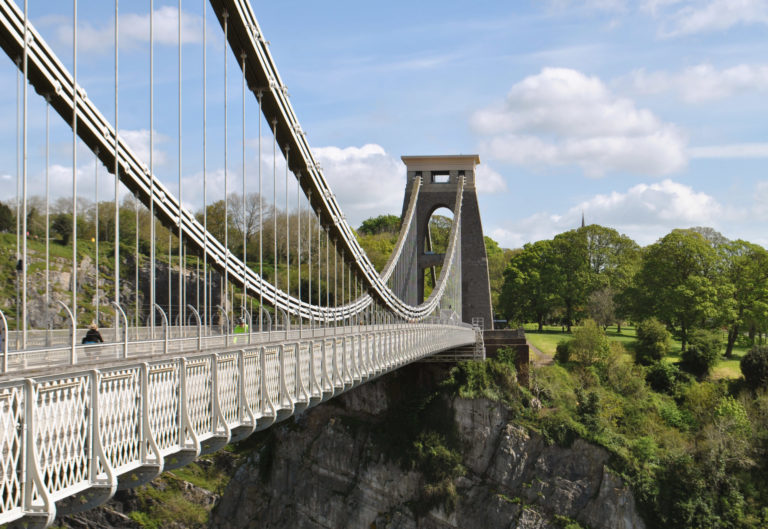
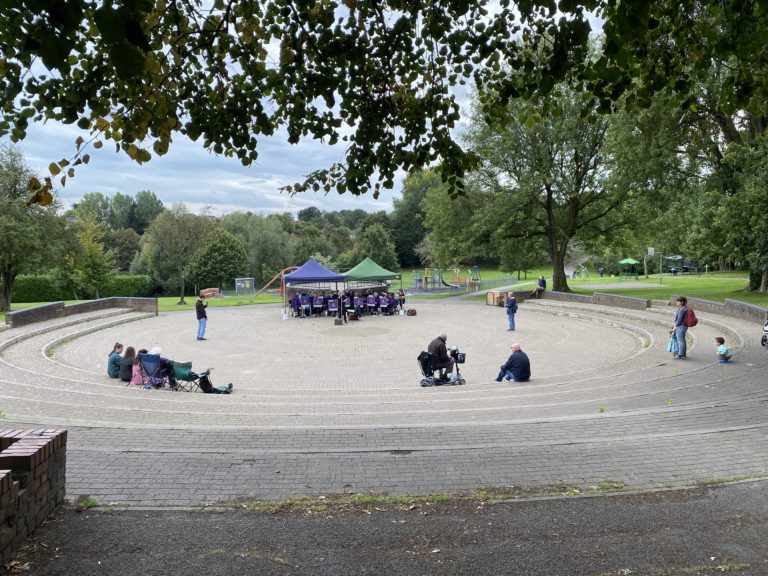
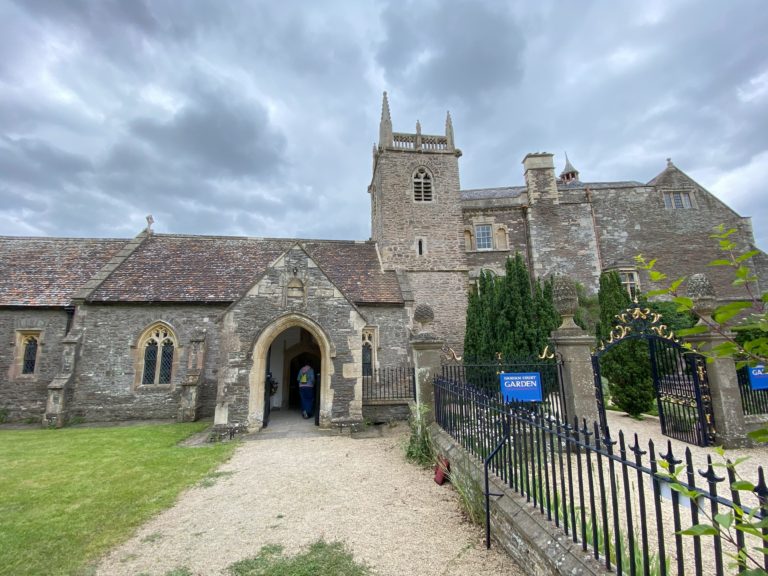
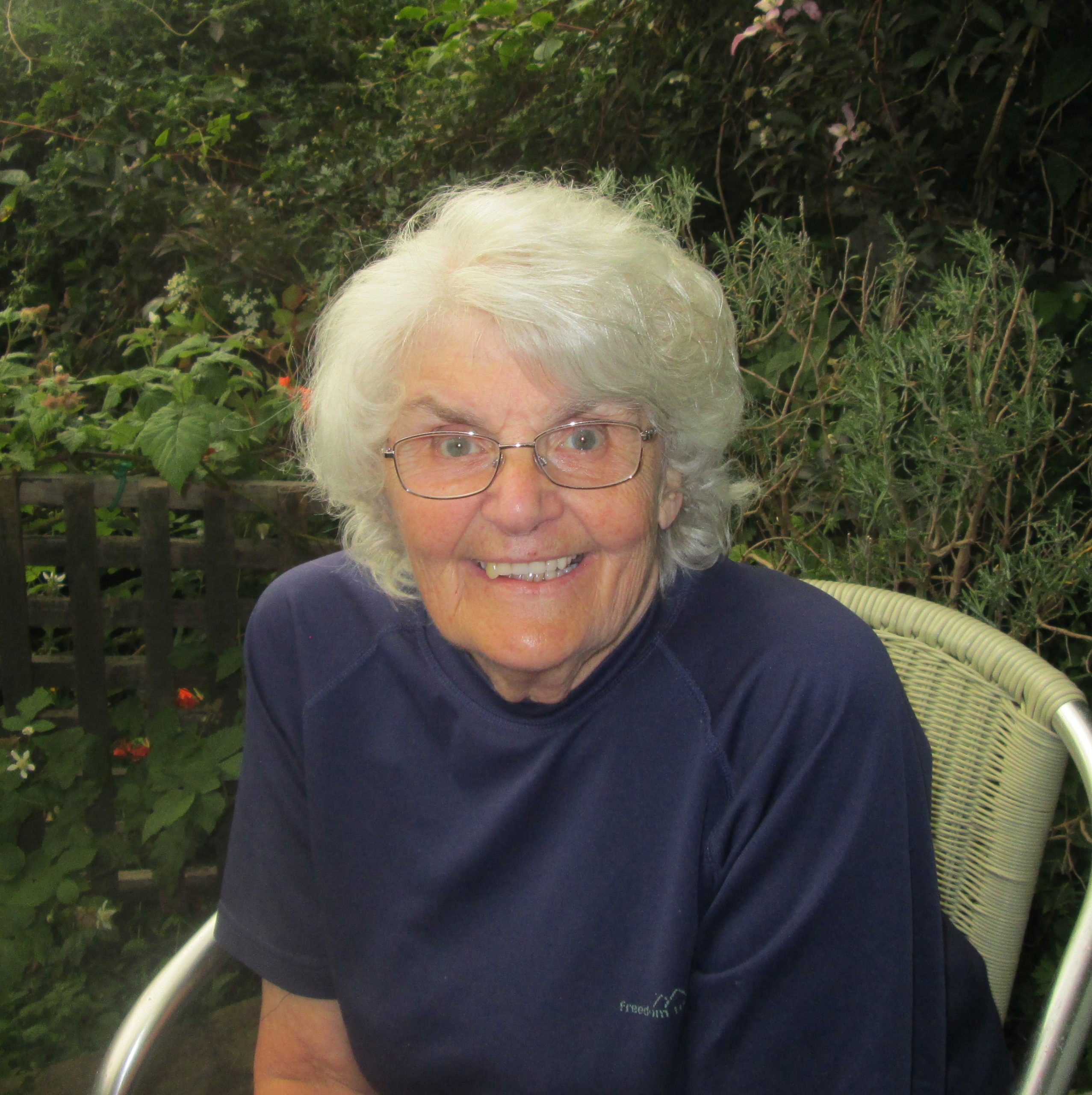


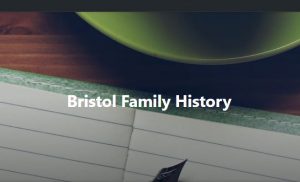
Leave a Comment